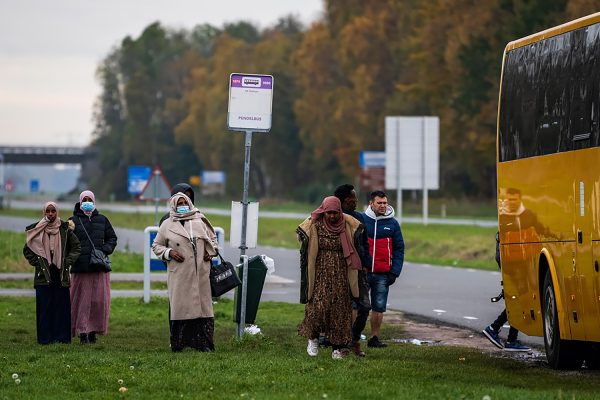
Dutch immigration authorities are desperate. Asylum applications have nearly doubled in the last year, to 4,200 in March and 3,200 in April. There are currently 40,000 asylum seekers in shelters, which is up from 26,000 a year ago.
There are plenty of stories about the consequences: asylum seekers sleeping on floors and in tents, local governments furnishing emergency shelters. (Here is a good one from de Volkskrant.)
There has been less analysis of the causes. I looked into the numbers, and spoke with experts, for Wynia’s Week. You can find the full story in Dutch here. What follows is a summary in English.
Not Ukrainians
My first thought was that the increase must be caused by the war in Ukraine. It turns out Ukrainians aren’t included in the figures. That’s because they don’t need to apply for asylum. Ukrainians already have the right to stay in the EU for two years.
Ukrainians do compete with other immigrants for housing. There are at least 60,000 Ukrainian refugees in the Netherlands. There is a housing shortage of 279,000.
Housing shortage
That is one of the reasons refugee centers are over capacity. They have some 30,000 regular places. 10,000 asylum seekers are sleeping in emergency shelters.
Of those 40,000, 14,000 have been granted asylum but are waiting for a permanent place to live. Half have been waiting for three months or more.
The national government has ordered municipalities to find more homes, which means other groups prioritized for public housing — psychiatric patients, young and low-income parents, welfare recipients — will have to wait longer.
Jan Latten, the Netherlands’ former chief demographer and currently a professor at the University of Amsterdam, told me the government is treating symptoms but not the cause. “There isn’t a handle on future numbers [of immigrants] that can be taken into account,” he said.
Latten has long argued that the Netherlands should set demographic targets in order to get a grip on migration as well as housing policy.
Unpredictable
Asylum seekers are not the largest group of immigrants. The Netherlands takes in more family migrants, foreign students and seasonal workers. But those immigrants will usually move in with their family or get housing from a school or employer.
The numbers of asylum seekers are also less predictable. Applications peaked at 60,000 in 2015 as a result of the war in Syria. (Family migration rose in subsequent years as Syrian refugees brought over children and spouses.) The number reached almost 40,000 last year. The largest group still came from Syria, followed by Afghanistan. But Algeria, Morocco, Nigeria and Turkey — safe countries for most — also sent thousands of people.
Based on this year’s figures so far — immigration officials processed 15,000 applications in April compared to 8,000 a year earlier — it seems the total will rival the 2015 record.
Turned away
Between 80 and 90 percent of applicants from Afghanistan, Syria and Turkey are given asylum. The first two because of the violence in those countries, the third if they are Kurds or critics of President Recep Tayyip Erdoğan.
Algerians, Moroccans and Nigerians, by contrast, are almost always turned away.
That doesn’t mean they leave. They can appeal the decision, and even if they are denied a second time they might remain in the Netherlands illegally. Estimates are tens of thousands do. Although the number is probably down from twenty years ago. Enforcement has improved.
Netherlands is appealing
The EU as a whole gets more asylum seekers from Colombia, Iraq and Venezuela. Why do relatively more immigrants from safe countries try the Netherlands?
Salvatore Nicolosi, who teaches European law at the University of Utrecht, suspects economics play a role: even low-skilled jobs in the Netherlands are fairly well-paid.
He also pointed out to me that the Netherlands has large Moroccan- and Turkish-Dutch communities, which makes it easier for Moroccans and Turks, who don’t speak Dutch yet, to make a life for themselves here.
Step toward citizenship
Latten gave another reason: asylum is almost always a stepping stone to citizenship.
Other countries distinguish between asylum seekers (fleeing persecution) and refugees (of war). The Netherlands doesn’t.
Once an asylum seeker has been granted residence, it is seldom revoked. It can be if they commit a crime. But few immigrants are deported. Countries of origin are reluctant to take back criminals. Morocco notoriously refuses to take back anyone who has applied for status elsewhere.
Most EU countries, including the Netherlands, allow residents to apply for citizenship after five years. Denmark is stricter and requires eight years of residence.
